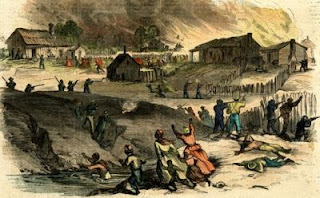The first groups's presentation talked about the Reconstruction Era. The amendments for African Americans is what makes it called reconstruction amendment. The 13th amendment abolished slavery. The 14th amendment granted citizenship for the people of color here in the United States.“All persons born or naturalized in the United States, and subject to the jurisdiction thereof, are citizens of the United States and of the state wherein they reside.” Hiram R. Revels was the first color man to serve as U.S Senate. He briefly served as Mississippi State Senate before. Many of the people in the United States did not like the idea of a colored man having this high of a position in the government.
In the presentation, black colleges were discussed. There were only a few schools that offered education to blacks. The white teachers lacked a lot of motivation to teach them. One of the colleges mentioned was, Institute for Colored Youth. This school was the first high education institution for African Americans. Another college, was Howard University. This university was founded by Oliver Otis Howard. This college was rumored to be secretly controlled by the government.
The second group's presentation was about the decline in black equality process. I learned a lot about the Memphis riots. I did not know this riot occurred and listening about it seemed intense. This occurred about a year after the Civil War ended. A white police officer was trying to arrest a black solider. Soon, 50 blacks showed up to try and stop the police officer. 46 black men were killed along with 285 people injured. The riot resulted in no arrest being made. This was considered the worst race riot in Memphis, Tennessee in history.

Comments
Post a Comment